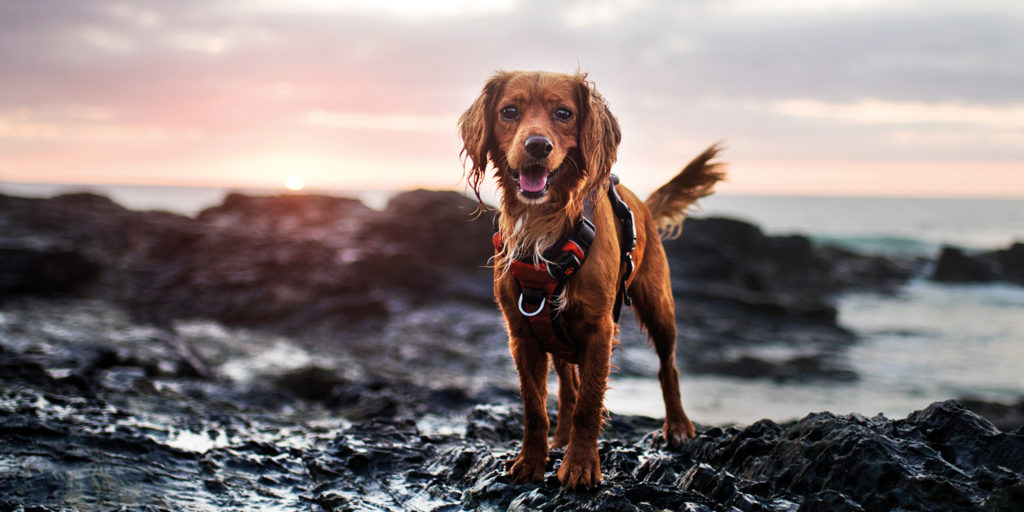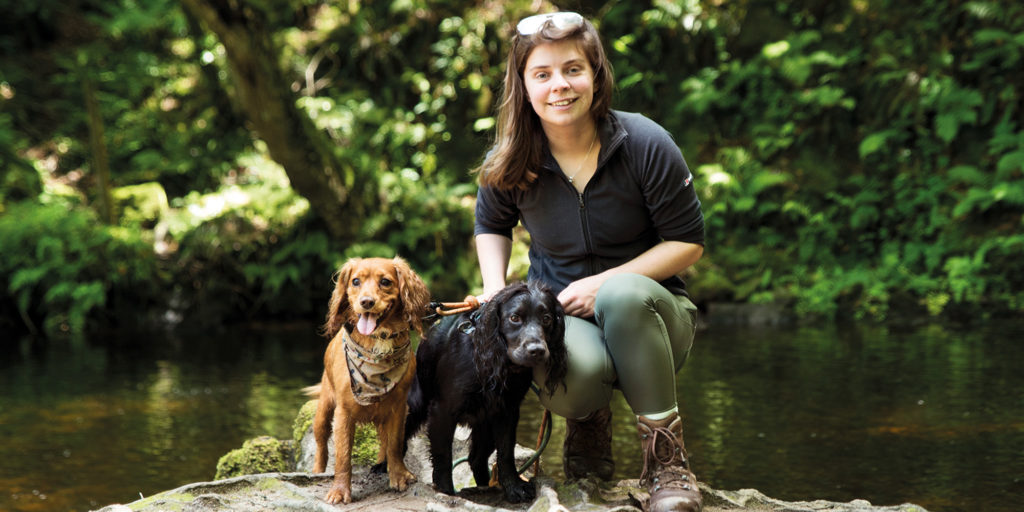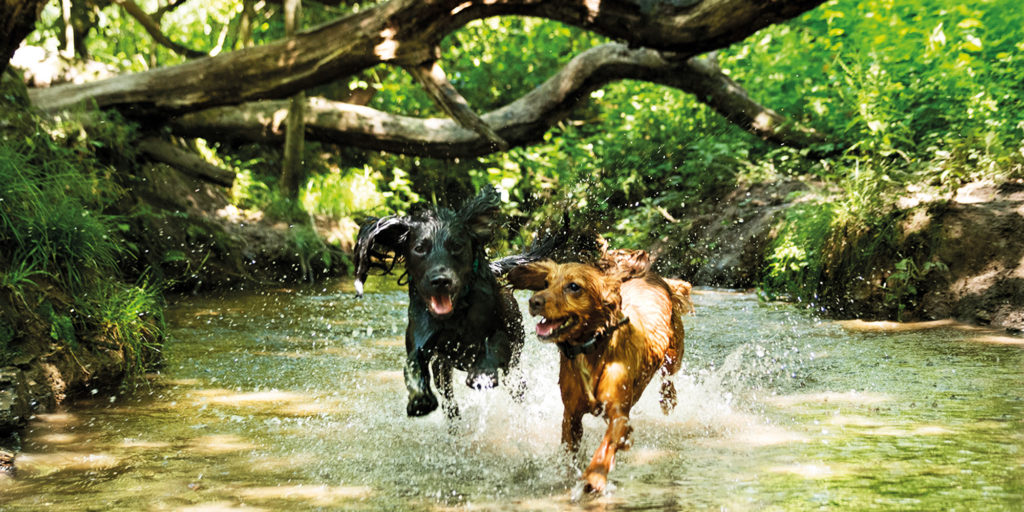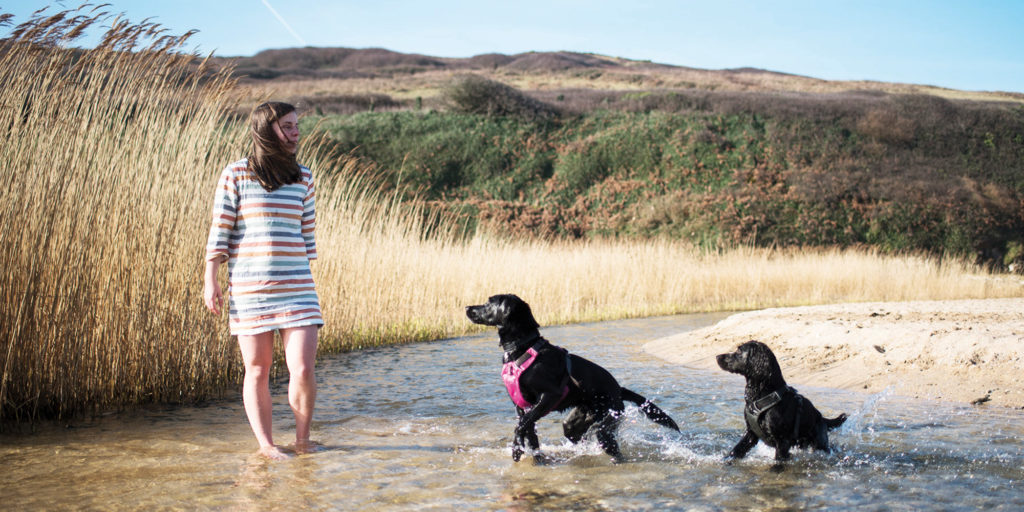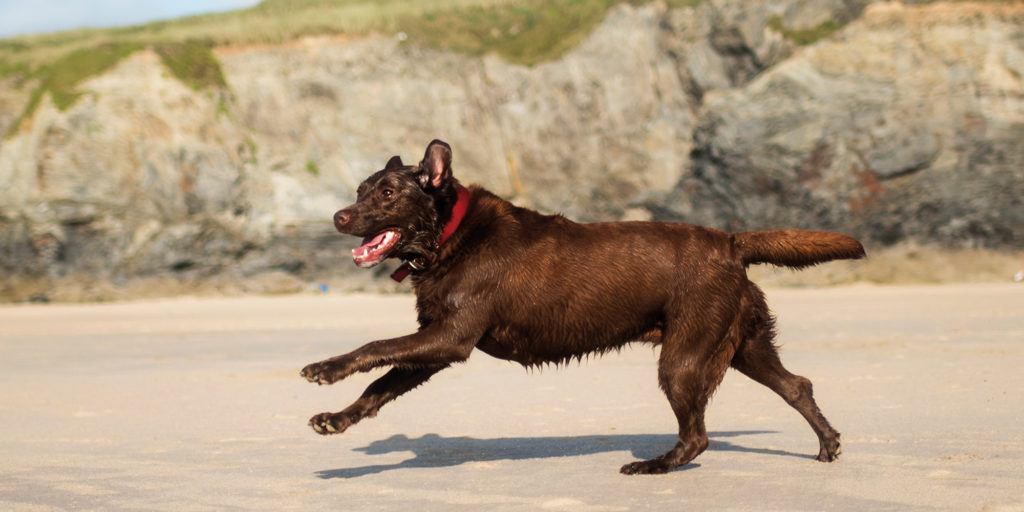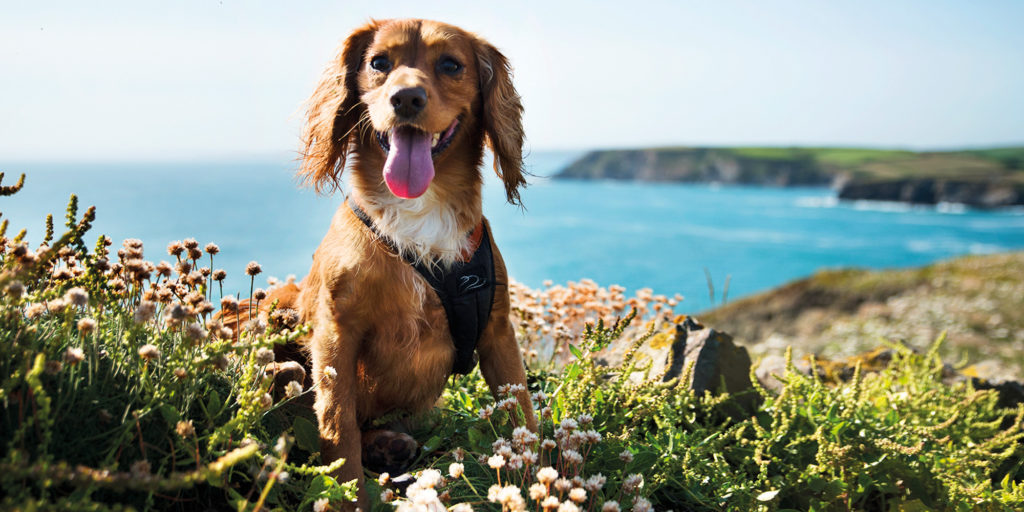

Dog days
Join us as we take a dog-friendly look at how to explore and enjoy Cornwall safely with your dog this summer.
For the Greeks and Romans, ‘dog days’ referred to the period when the dog star Sirius appeared to rise just before the sun, in late July. We now use this term in a more general sense, referring to the heady time between early July and early September, when the hot sultry weather of summer usually occurs in the northern hemisphere. So, with the ‘dog days’ of summer upon us it seemed only fitting to discover how best to enjoy or wonderful county with man’s best friend.
But where to begin? Cornwall has so many beautiful places to enjoy with your canine companion, the choices are endless…
I decided to enlist the help of some experts to unlock some lesser-known gems as well as revisiting old favourites – and all while keeping you and your dog safe and sound. Hattie Day and her loyal hounds are the brains (and the bark!) behind pawsandtors.com, a website dedicated to ‘helping every dog live a life of adventure’. Hattie is an outdoor dog and lifestyle photographer who works with dog businesses across the UK and Europe, and along with her working cocker spaniels, Woody and Hen, she loves spending time outdoors, be that on cliff walks, long distance hikes, or even paddle boarding. Hattie’s hidden gems have something for everyone to enjoy…
An enchanting forest: Golitha Falls
Follow the tumbling Fowey river as it winds through Draynes woodland on the southern tip of Bodmin Moor. The path is uneven and rocky, so wear trainers or boots and mind how you go. Look out for deer drinking from the river and woodpeckers chipping away at the ancient oaks.
For a city escape: Idless Woods
A hidden gem on the outskirts of Truro. One of six Forestry England managed sites in Cornwall, boasting well-maintained and relatively flat paths. There’s a café in the free car park too and plenty of picturesque picnic spots throughout the woods.
For chasing sunsets: Godrevy Heritage Coast
Mexico Towans boasts endless sand for dogs to enjoy, while you soak in the panoramic views of St. Ives. You may have to scramble through the dunes at high tide, as the beach gets cut off from Gwithian. Head up the coast path in search of seals from the cliffs, just past Godrevy Lighthouse.
For days out with the family: West Pentire
West Pentire is a great introduction to the Cornish coast path. The path is relatively flat, with plenty of beaches to explore. Hire a SUP at Crantock and have a go at paddling up the Gannel. Or head to the cliffs at Polly Joke in early summer to watch the spectacular sea of red poppies blowing in the wind.
For beachcombers: Dollar Cove
A quiet cove shrouded in stories of shipwrecks. The Spanish ship San Salvador sank here in 1669 and her cargo of silver dollar coins continues to wash up on the beach. Continue along the coast path, past Poldhu Cove, where you can grab a coffee or a light lunch at the beach café before heading up the hill to marvel at the Marconi monument.
If you have a young family, and find that long walks are tricky, then a visit to one of Cornwall’s dog-friendly attractions is sure to keep everyone happy. The Lost Gardens of Heligan (heligan.com) has now reopened and is ready to welcome you and your dog. There are miles of pathways, woodlands and farmland to explore on the 200-acre site, with new and exciting things to see at every turn.
Or why not take a trip to The Cornish Seal Sanctuary (sealsanctuary.sealifetrust.org), where dogs on leads are welcomed with open flippers! As well as being able to watch the seals, penguins and sea lions at play, there are also 42 acres of land and woodland to explore, all set against the stunning backdrop of the Helford river.
There is also a plethora of National Trust sites (nationaltrust.org.uk) across Cornwall that have re-opened and are dog-friendly. From the sheltered gardens of Trelissick and Trengwainton, to the rugged beauty of Cape Cornwall and Godrevy and across to the sailing waters off St Anthony Head and Fowey, there is a walk and a view to suit every taste. As with most Cornish attractions post-lockdown, visits must be booked in advance, so if you are planning a trip to any of these places, please visit the appropriate websites to reserve your slot.
As any dog owner knows, it’s imperative while out and about with your dog that you are able to keep your pooch safe. Luckily, vet Andy Cornelius of kernowvetgroup.com was on-hand to give me some safety advice, especially as we will now be taking our canine companions out in a ‘new normal’.
He suggests that the best way to obey social distancing when out with your dog is by avoiding crowded areas and peak times. If you can’t avoid going out when it might be busy, think about exploring areas closer to home – it can be fun, and there are a myriad of footpaths and bridleways criss-crossing Cornwall just waiting to be discovered. Invest in a good Ordnance Map of your local area and get exploring.
During these times, Andy also advises that keeping your dog under control and on a short lead is now more important than ever when around other people and animals. Post-lockdown, your dog may not be as used to seeing others as they were before. And remember, it’s summer now! Your dog can get very hot, very quickly, even on short walks and for short periods in cars. Take a plentiful supply of fresh water with you as the usual toilets and cafés may still not be open to refill.
And finally, Andy adds that it’s worth remembering that your dog’s vaccines might have lapsed during lockdown. Make sure the vaccinations are brought up to date, especially if you have a new puppy, and be sure to use effective parasite control. Ticks and lungworm are risks as well as fleas and intestinal worms.
With so much stunning coastline to enjoy, taking your dog with you to the beach can be fun for the whole family. However, whilst the RNLI lifeguards are on-hand to look after your water safety, it’s every dog owner’s responsibility to make sure their pup is safe too. The experts at penmellynvet.co.uk were able to give me some great tips on keeping safe on the sand and in the sea.
Reiterating Adam’s advice, they warn to be careful on warm and humid days. Dogs can’t sweat, and so their main form of heat loss is by panting, which is not effective when it’s humid outside. I was shocked to hear that when it’s humid, even if the temperature’s below 25 degrees, a dog can still suffer from heat stroke, so always avoid walking them in the middle of the day.
Keep your eyes peeled for palm oil on beaches – a white substance with a smell of petroleum – that if ingested can cause obstruction in the gut and/or cause a pancreatitis. Dogs can also swallow too much sand whilst playing on the beach, which can cause a build-up to occur in the stomach and intestines and act as a blockage or irritant, and drinking water from the sea, scavenging and a change of diet (different dog food/extra treats/human food titbits) can all wreak havoc with your dog’s digestion.
Dogs love nothing more than having a good sniff around and exploring when out walking, but it’s worth noting that as the days get warmer, Cornwall’s adders are also venturing out to bask in the sunshine. If your dog is bitten by an adder, or becomes suddenly in pain after a walk, seek veterinary advice as soon as possible.
Also, running across rocks on the beach is an easy way for your dog to tear a claw. This is a minor but very painful injury when it exposes the quick. Keeping your dog’s claws trimmed will reduce the risk of this happening. And finally, Penmellyn Vet Group also suggest keeping even the best-behaved dogs on a lead if you’re enjoying a coastal walk near cliffs, having seen far too many injuries and deaths from dogs taking a tumble.
So, wherever you choose to explore in Cornwall this summer with your dog, enjoy and stay safe!
DID YOU KNOW?
Some of the dog restrictions on Cornish beaches were relaxed during lockdown, but many are now being reinstated from the beginning of July. You can find all the latest updates on which beaches are dog-friendly, and when, at cornwall.gov.uk
